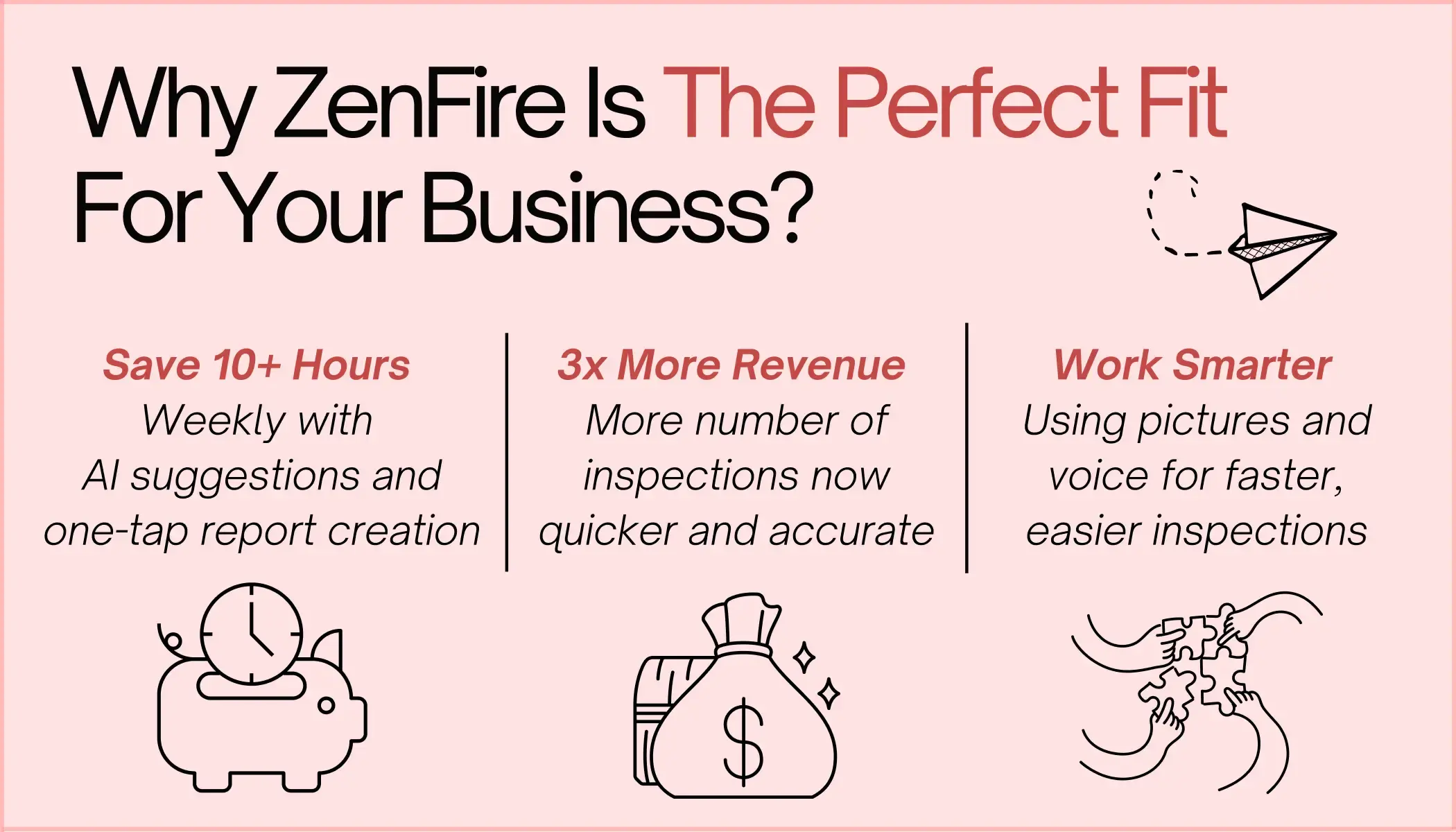
- Cybersecurity requires mandatory SL documentation & risk assessment.
- Acoustic & thermal detectors are now a part of initiating devices.
- RAMO enables low-volume fire alerts for sensitive zones.
- Smoke detector spacing varies by ceiling height & requires AHJ approval above 40 feet.
- Voltage drop must follow standardized calculations to ensure compliance.
In 2025, the potential fire threats are more than just smoke and flames because buildings are growing smarter. With increasing reliance on networked communication, smart detection systems, and more complex occupancy types, the updated NFPA 72 requirements this year are far beyond routine inspections. These changes are focused on new technologies, cybersecurity, smoke detector spacing, and other standards that directly impact how the fire safety system functions. And due to the evolving code regulations, the smart fire detection system market is growing at a CAGR of 7.8% and is expected to reach $57.4 billion by 2025.
It is becoming increasingly challenging for fire safety professionals to ensure compliance with these evolving NFPA codes and simultaneously handle a significant volume of inspection schedules, manage a team of fire technicians, or run an entire fire safety business. That’s why integrating a fire inspection software like ZenFire is the smartest choice one can make to simplify the entire operation with digital solutions like automated scheduling and dispatching, customizable NFPA-compliant checklists and forms, estimates and proposals, invoices, and smart deficiency reporting.
Schedule a free demo with ZenFire today and let us handle your fire business and help you stay compliant with the evolving codes while your team focuses on what’s crucial.
In this article, we discuss the most important changes to NFPA 72 in 2025, what they are, and why they matter.
Table of Contents
Cybersecurity
Cybersecurity provisions have been introduced in previous editions. However, the 2025 NFPA 72 edition has expanded and defined cybersecurity requirements in Chapter 11. There is a more structured and risk-based framework for protecting fire alarm and signaling systems from cyber threats.
There’s an additional section that emphasizes the importance of SLs (System Security Level). The system designer is responsible for defining the appropriate level of cybersecurity (SL1 to SL3) based on the risk assessment, system complexity, and threat environment. Additionally, for the first time, NFPA 72 has explicitly mentioned mandatory risk assessment documentation during system planning and design stages, where factors like network connectivity, remote access points, and sensitivity of system functions need to be considered. There must be unique credentials and multi-factor authentication, and connected systems must be capable of real-time event logging, activity tracking, and audit trails to detect and respond to suspicious activity and other threats. Moreover, the communication that involves remote annunciation or system monitoring must use the encrypted channel to protect against data manipulation. The installers and equipment manufacturers must document the cybersecurity capabilities of the fire alarm and signaling devices, including the known vulnerabilities.
How Can You Align Yourself With The Change?
If you are a fire inspector, you must review the cybersecurity documentation as part of your fire safety inspection, and not just wiring diagrams of the fire alarm circuits. If you are a fire technician, then you have to design and install the fire alarm system that will align with the security levels and make sure that you are clearly documenting everything at each stage of deployment. Fire safety businesses and service providers should make sure that their team is knowledgeable and equipped to handle the cybersecurity integrations and maintenance.
Advanced Detection Technologies
The buildings are becoming more complex, and there’s a need for more advanced technologies other than conventional smoke and heat detectors that will give more accurate warnings in high-risk environments. Considering this, NFPA 72 has added acoustic leak detectors and thermal image fire detectors to Chapter 17, which is particularly about initiating devices.
Even though these detectors are recognized, NFPA 72 needs performance characteristics, spacing, sensitivity, and environmental suitability to be analyzed carefully. These automatic fire detectors should be compatible with the fire alarm control panel and software logic. And these detectors should be placed in low-noise and low-thermal variation environments to avoid any false positives. Additionally, they must be incorporated into the system logic and the notification portal that aligns with the occupancy risk category.
How Can You Align Yourself With The Change?
If you are a fire inspector, you need to familiarize yourself with the new type of documentation for the systems that use these advanced detectors. If you are a fire technician, then you must test these devices according to the operational environment and make sure that they are compliant with the minimum requirements outlined in NFPA 72.
Restricted Audible Mode Operation (RAMO)
The 2025 edition of NFPA 72 has introduced RAMO as a new notification strategy for a fire emergency. Its unique characteristic is that it will alert the occupants in a controlled, targeted sound level without creating any unnecessary stress in sensitive environments such as hospitals, research laboratories, and behavioral health facilities. But there are certain criteria before implementing restricted audible mode operation in a facility:
The fire protection engineer must perform a risk assessment and document why a low sound volume will still contribute to life safety during a fire emergency.
RAMO is applicable in zones like operating rooms, maintenance control rooms, staff-only zones, and other zones where the occupant is trained enough to respond to low-volume signals.
Notification appliances in RAMO zones must be listed for private mode use, integrated into the overall emergency communication plan, and configured in a way to ensure the coverage as outlined in Chapter 18 and Chapter 24 requirements.
How Can You Align Yourself With The Change?
For inspectors, integrators, and designers, there are some additional responsibilities in documentation and testing because the system design must explicitly call out RAMO zones with supporting rationale. There is a need for AHJ approval for RAMO use, especially if used in lieu of public mode. Additionally, during testing, the system must properly operate at the specified sound levels in the RAMO zones.
Clarification On Smoke Detector Spacing
Before 2025, there was no clearly defined cutoff in NFPA 72 regarding smoke detector spacing rules. In 2025, for ceilings up to and including 40 feet, there should typically be 30-foot spacing in smooth ceilings under normal air movement conditions unless modified by room geometry or ceiling construction. And for ceilings above 40 feet, one needs to use a performance-based design approach, which requires computational fluid dynamics (CFD) modelling or empirical fire modelling and thorough documentation that justifies spacing based on smoke transport, stratification, ceiling jet behaviour, and response time of the detector.
How Can You Align Yourself With The Change?
Fire inspectors must ensure that no assumptions are made for detector spacing in a high-ceiling environment, and supporting documentation such as FDS modelling reports must be evaluated. For fire alarm integrators and designers, you must measure the ceiling height during site assessment, and if it is more than 40 feet, the AHJ must review and approve a performance-based justification.
Standardization Of Voltage Drop Calculation
NFPA 72 has now mandated a uniform framework for calculating voltage drop in notification appliances and Emergency Communication Systems (ECS). There is no radically new math introduced; rather, the method is clarified so that everyone is on the same page.
Some of the key changes are:
For conductor resistance, one must consider the manufacturer-published wire resistance or standard value in Ω/ft or Ω/m, and the loop length should also be taken into account.
Worst-case loading must be calculated for the maximum number of appliances on the device, and the device that is furthest away must receive an acceptable voltage under full load conditions.
Design documentation must have circuit-by-circuit breakdowns, and the wire gauge, load current, voltage at each appliance, and margin of safety must be properly indicated.
How Can You Align Yourself With The Change?
The fire system engineers and designers need to update their design software to reflect the 2025 NFPA 72 methodologies. Fire safety inspectors can’t accept vague or approximate methods of voltage drop calculation and must ask for standardized documentation for compliance verification. Fire safety contractors can optimize the wire sizing and circuit design to reduce material costs while also staying compliant with the code.
Auxiliary Service Providers and Communication Techs
With the rise of cloud-based systems and third-party data handling, NFPA 72 has introduced significant changes to Auxiliary Service Providers (ASPs) in Chapter 26, which deals with the Supervising Station Alarm System. In the updated version, the ASPs must transmit signals without delay or loss of data and must provide detailed documentation of how signals are handled and stored. If an ACP is involved in the contract between the fire alarm service provider and the supervising station, then the role of the ASP must be identified. Additionally, all ASP-involved paths must meet the supervised transmission and signal verification requirements outlined in NFPA 72.
How Can You Align Yourself With The Change?
Fire alarm system designers need to make sure that the ASP is meeting all the performance criteria mentioned in NFPA 72. Fire inspectors need to check cloud infrastructure, reliability, and traceability, and not just physical wiring. Fire safety businesses can also bundle ASP evaluation and compliance reporting as part of a premium service offering.
Fuel Gas Detection Shifts To NFPA 715
In the revised Chapter 29 (Single- and Multiple-Station Alarms and Household Signaling Systems), NFPA 72 has redirected all the fuel gas detection system specifications to NFPA 715, which is the Standard for the Installation of Fuel Gas Detection and Warning Equipment. So, all the technical guidelines, such as the location, performance, installation, testing, and maintenance of detectors of fuel gases, are now governed by NFPA 715 instead of NFPA 72.
How Can You Align Yourself With The Change?
Fire inspectors have to make changes in their compliance checklists and include NFPA 715 references. Fire alarm integrators must ensure that the system complies with both NFPA 715 and NFPA 72 if combustible gas detectors are included.
Conclusion
There have been quite a significant number of amendments in NFPA 72 requirements, and they represent a whole new perspective on how we can think about fire detection, life safety, and digital infrastructure. From cybersecurity to smart detector integration to clarified smoke detector spacing to introducing a unique framework for voltage drop calculation to improve emergency communication strategies and shifting of fuel gas detection requirements to NFPA 715, the codes are evolving continuously, and inspection processes are becoming more complex. That’s why traditional tools won’t work anymore.
ZenFire provides digital solutions that streamline your entire business operation. Whether you are managing multi-site inspection teams or adapting to new code requirements like RAMO zones or ASP signal integrity, ZenFire helps you navigate through these challenges easily. From NFPA-compliant checklists and forms to auto-generated reports and smart scheduling and dispatching, we help you shift from reactive to proactive compliance.
Schedule a free demo with ZenFire today and let us handle your fire business and help you stay compliant with the evolving codes while your team focuses on what’s crucial.

Get Insights Delivered Straight
To Your Inbox!
Related Reading
Why Your Field Software Management Software Needs QuickBooks Integration
ZenTrades Why Your Field Service Management Software Needs QuickBooks Integration Read More Request Demo...
Read MoreZenTrades How To Manage Electrical Service Agreements Like...
Read MoreZenTrades The Best 5 Jobber Alternatives In 2023...
Read More

